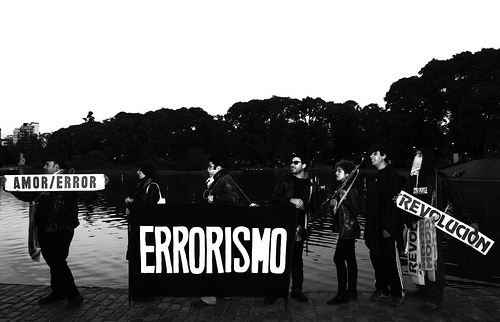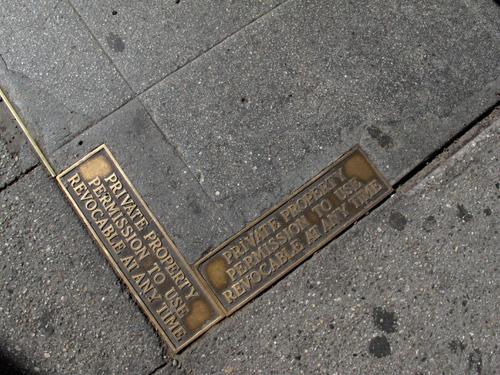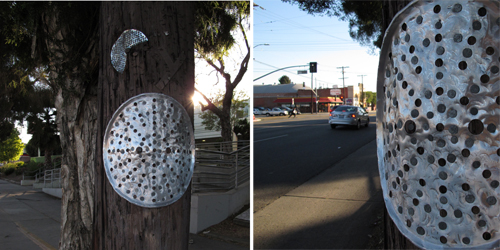Deterritorializations: Repetition, Stutter, Report (the first of two brief forays)

The book is liquid dreams. Writing is stone. Writing is breath unheld. The book is air and underground passages. Where there is no water, but light is liquid. Where warm bodies gather. In translation what there is to say vibrates (vacillates? reverberates? hammocks?) in the cleft between what one person is saying.
Between what one person and another—ostensibly “me”—is saying. Are saying.
In translation the body pulsates—cannot be forgotten—to be an acrobat inside someone else’s mouth. It’s like a skeleton, but softer. A scaffolding underneath the exoskeleton. It’s not like a skeleton at all. It’s an amoeba. It’s a mist. It’s a mistake made repeatedly until it becomes apparent. Until it becomes apparent that the mistake is the only option, and therefore the correct option. Or if not correct (never correct), then possible. A possible option: an optics. A perspective.
It isn't sky, only words of the sky. An imitation on the surface—drawn
icon or written sign. To keep time—to measure. Now this way,
now that way. Hit or miss—an arrow aimed at the eye of love.
Sanctuary, the space of the poem, is not a place of adequacy but the
space to explore adequate inadequacy. The poem is space of failure,
contradiction, and abjection…Failure becomes part of a field
of relations rather than an articulation of inadequacy.
Sanctuary, the space of the poem, is not a place of adequacy but the space to explore adequate inadequacy. The poem is space of failure, contradiction, and abjection…Failure and abjection have their own ontological and epistemological complexity. Failure becomes part of a field of relations rather than an articulation of inadequacy.
At this time last year I wrote a letter a day for two hundred days. The paragraphs that begin this post are mined from those letters. I was trying to renegotiate my relationship to the lived archive. I was trying to keep time. I was trying to feel memory—to get the physical sensation of remembering into my synapses, into my fingers. I was trying to think out loud, toward specific listeners. I was trying to articulate some thinking about translation that resisted articulation. I was trying to fail publicly, to get comfortable with standing on unstable ground, and in the process to appreciate that error is option—err or. As in translation: the word or phrase could be this or this or this or… not an infinite realm of possibility, but sufficient multiplicity within the constraints offered by the original to be entirely unsettling and entirely thrilling, where the purpose of the work is not to achieve perfection or stasis, but rather to inhabit the gap or leap or uptake in breath (“uptick,” Kaia Sand calls this space in the final section of Remember To Wave) between terms, knolls, moments.

In the same sequence of letters, I wrote these sentences. Poetry and art-making are about specific, concrete material realities—substance, in the chemical, culinary, geographical, or landscape sense of the term—and about representation, expression, and modes of exteriority. The micro and the macro, the specific and the meta, simultaneously. Or perhaps some forms and instances are not meta? No, all forms—even those that reinforce the linguistic status quo rather than critiquing it—are also meta, even if their meta-aim is to accept the workings of power in language unquestioned. Some months later I read Johannes Göransson and Joyelle McSweeney’s Ugly Duckling Presse chapbook Deformation Zone. As if it were a pop song, I can’t get this paragraph of Joyelle’s out of my head; I bop to it as I bike through the city:
I am using the term medium in two different ways here—one, medium like paint, photograph, marble, steel, the stuff of art, the materials of art. The substance. And the other, the transfer of art from one form to another, the delivery system, the conveyance, the technology. Translation fits both definitions, and as such is the example par excellence of art itself. It’s both a medium and a medium. Both a thing, a substance, a material, and a conveyance, a way that one material is converted to another form, one substance de-, re-, and con-formed to a new legibility. It already has impossible properties, impossible doubleness, self-saturation, impossible borders.
Translation is repetition and reverberation and echo where the canyon swallows the utterance before it can reach our ears. It is repetition and mutation at the same time. Presence and absence are not separate. I was dazzled by hearing Yona Harvey read from Hemming the Water on Friday, poems interwoven with thoughts on temporality, on rhythm, on gender, on race, on carnival rides and letting go, on how to tease song or talk out of complexity. She talked about repetition (which sizzles in her work) as “a stutter in the poem,” the repeated word as “that word and ten other things at the same time,” making the word mean something more or something else within a “changing same” that somehow relates to our capacity to use language to move through uncertainty. (That is, through the world.) (That is, through being.)

Here I think of the local, the particular peculiar aspect. How does
it enter into conversation with that which is larger than it without
being defined by the “larger”? (And definition is about delineation,
demarcation, control, restriction, as much as it’s about clarity
and articulation.)
—Tonya Foster, from a conversation with Evie Shockley
Elsewhere I’ve written (in the excellent company of Christian Nagler and Brian Whitener) about the ever-present colonialist (or perhaps colonizing?) aspects of translation, even as the impulse to translate (or to read works in translation) may come out of rejection of colonialist frameworks. How to make the repetition-stutter-report that is possible in the erroneous, imperfect, failed space of translation shimmer such that the “particular peculiar” might remain both legible and illegible in generative ways? How to “delineate, demarcate, control, restrict” in writing (or rewriting, as translation more aptly is) that might suggest a buoyant capacity to cross lines, remake marks, subvert control, evade restriction? The stutter of repetition is both insistence and fade. What we see disappears only to reappear again, slightly—or more than slightly—unrecognizable.
A poet, translator, book-maker, activist interpreter, educator, and urban cyclist, Jen Hofer was born...
Read Full Biography

